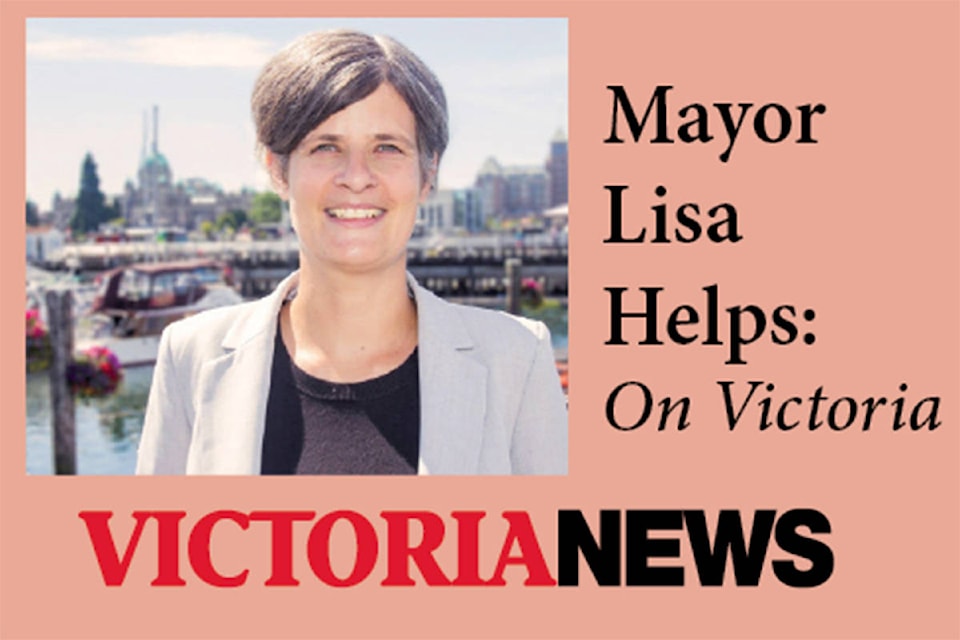The Pandora Avenue two-way separated bike lane opened on time and on budget on May 1.
It’s been open for a month now and the use has been staggering. Preliminary data reveal that we’re seeing well over 1,000 people per day using the infrastructure. This is a marked increase from usage on Pandora before the lanes opened.
In addition to data-driven declarations of success even in these early days, anecdote and observation tell a deeper story. Before the installation of the Pandora bike lane, I can’t say I’d ever seen someone under the age of 10 riding their own bike downtown. Now I’m seeing young kids, on their own two wheels, trailing closely behind their parents. And not only on sunny weekend days but also during the morning and afternoon commutes.
The new bike lane is making older kids and their parents feel safer, too. I got this email from a Vic High parent last week: “Good morning Lisa. We attended my daughter’s last dance performance at Victoria High. After we left for home in our car, she left on her bike. She got home shortly after us. We said, ‘That was quick, how did you do that?’ She said, ‘I took the protected bike lanes; Lisa gave us a map.’ Thank you. Knowing my daughter is safe means a lot to us.”
These kids and teenagers are the people we built the bike lanes for. They’ll grow up knowing how to move through the city by bicycle and they’ll be able to do it safely. Biking will be normal for them, not some “alternate” mode of transportation.
In addition to smiles and emails of thanks from parents, we’ve also received emails saying that cyclists should be paying their fair share for this new infrastructure. And that the Pandora bike lane was a waste of their property tax dollars.
In fact, it’s the opposite. People who ride bikes more than they drive cars subsidize infrastructure for cars. Everyone pays property taxes (those who rent pay them through their rent) and it’s property taxes that pay for roads.
It’s enormously expensive to build and maintain roads for vehicles, which are much harder on roads than bikes or pedestrians. Vehicle use produces potholes and the need for pavement repair. Vehicles mean that when we build new infrastructure like the Johnson Street Bridge we need to build additional wide, expensive lanes for cars. Those who bike, take transit, or walk more than they drive are subsidizing car infrastructure.
Second, the Pandora bike lanes were not paid for with property taxes, but rather with gas taxes. Gas taxes are collected when people pump gas into their cars. Many people who ride bikes also drive cars from time to time so they are helping to pay for this infrastructure, too.
Want to learn more about the economics of cycling? Join us on Monday, June 5 from noon to 1 p.m. at City Hall for Monday’s monthly Lunchtime Lecture featuring Portland’s Elly Blue, author of Bikenomics: How Bicycling Can Save the Economy.
Lisa Helps is mayor of Victoria.



